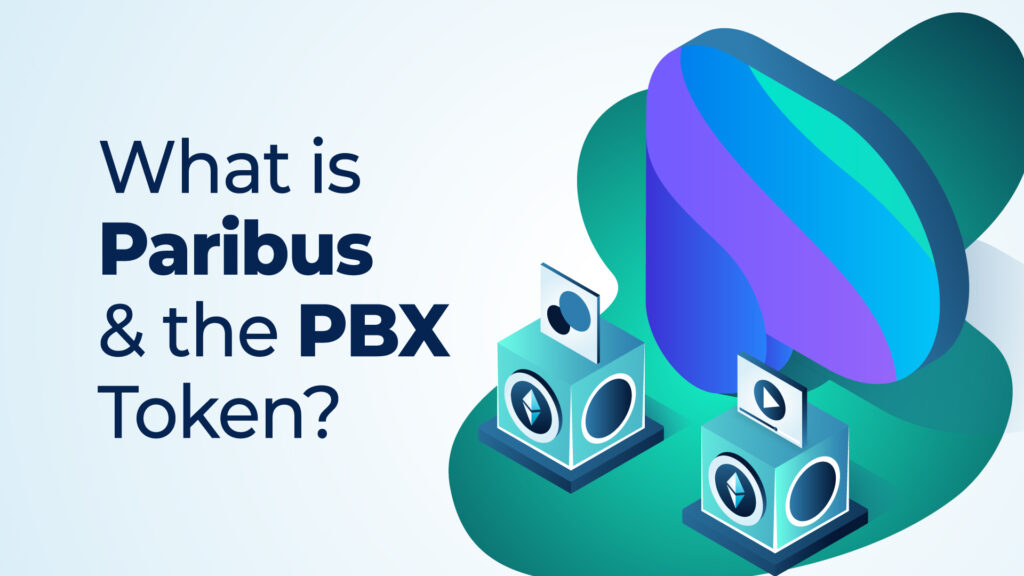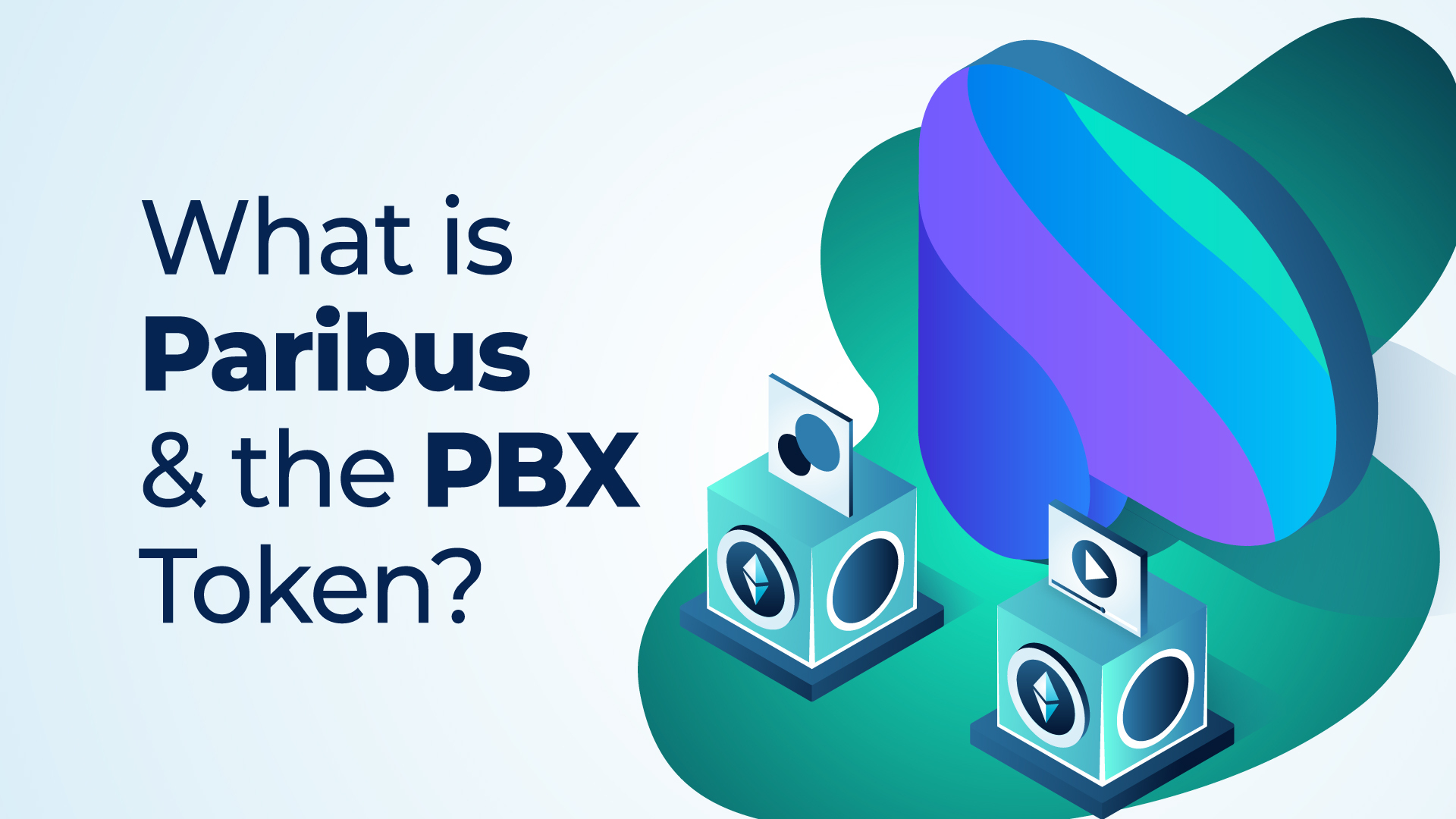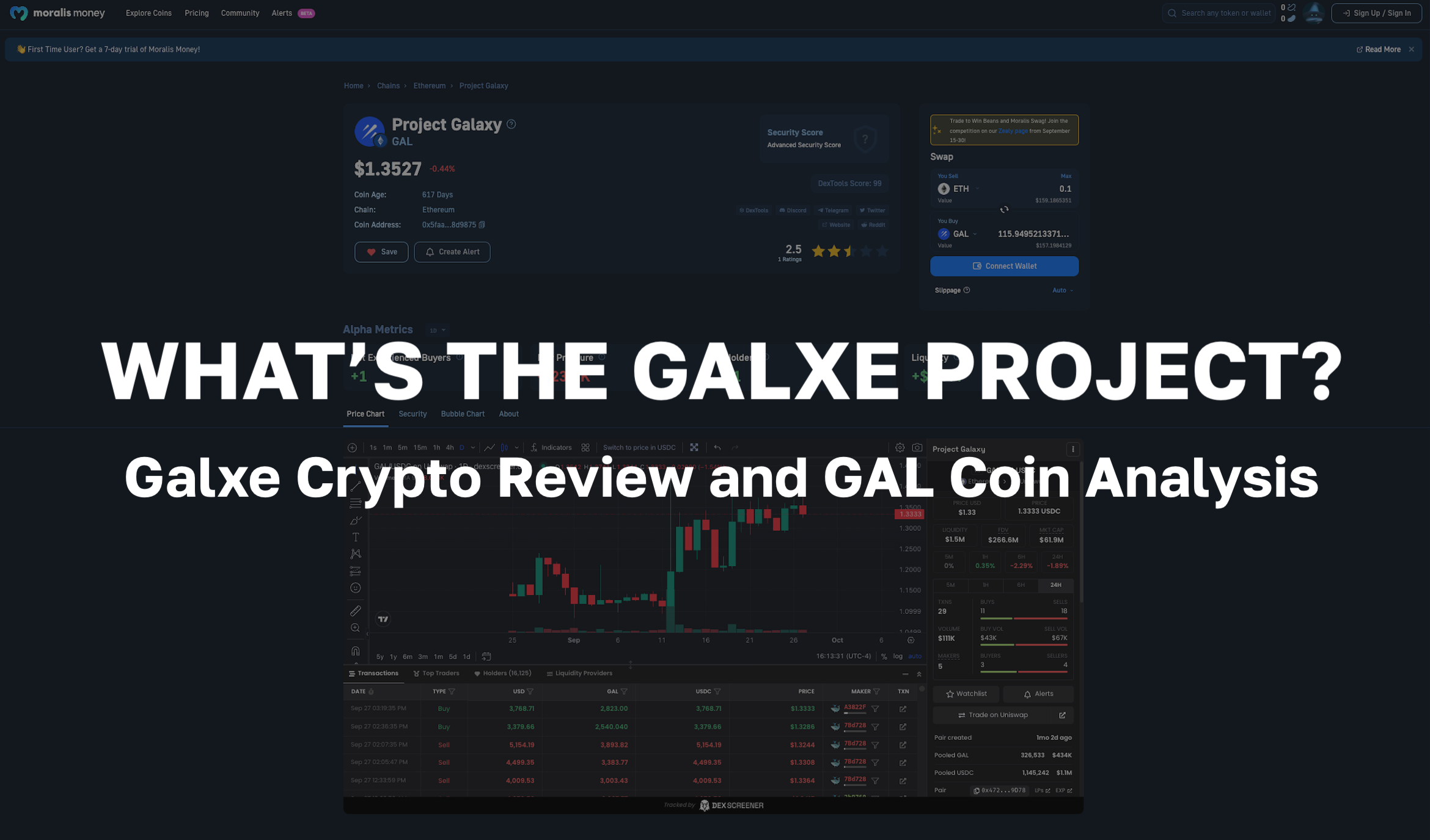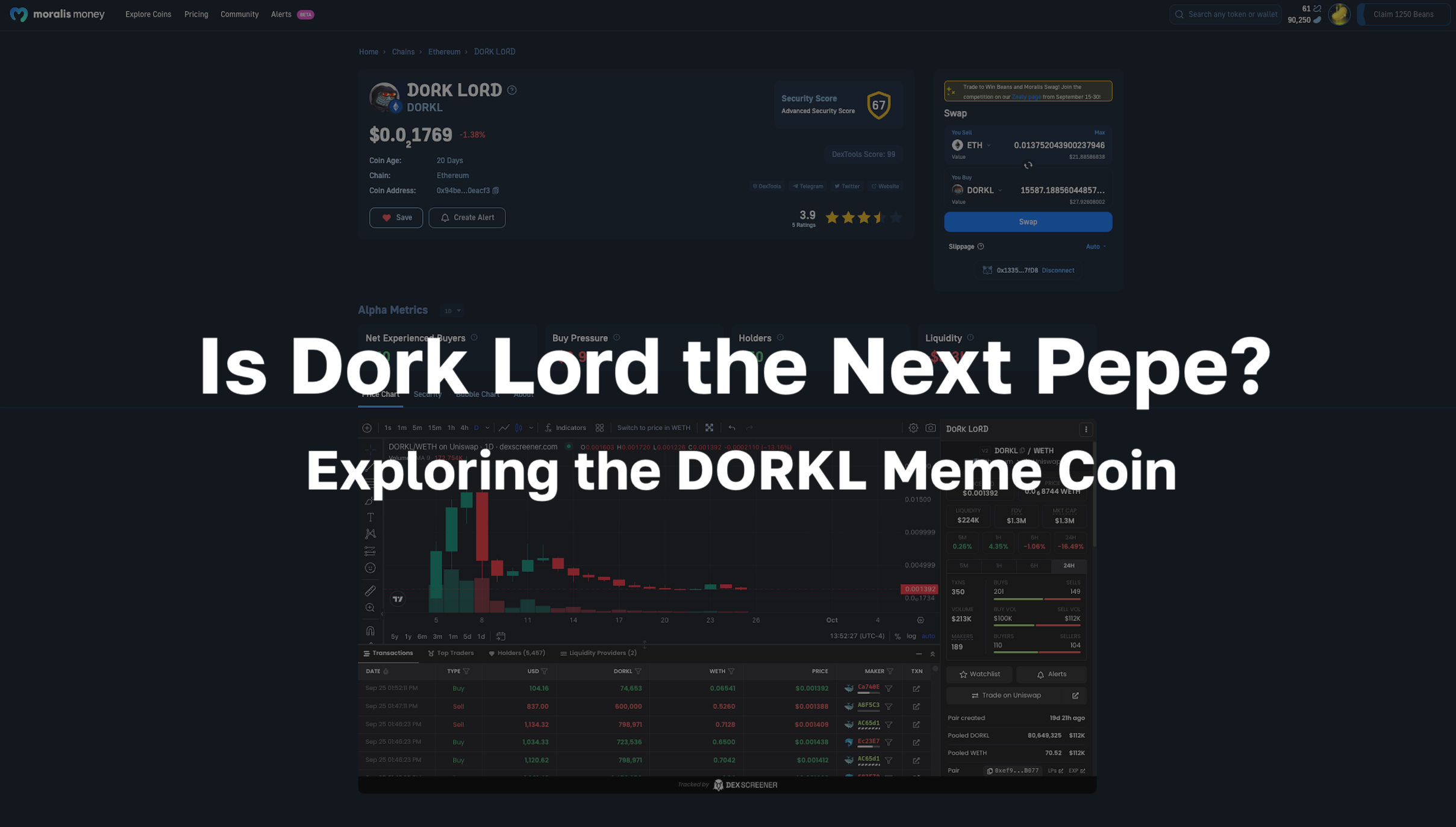
The Paribus network is a chain-agnostic protocol operating on the Cardano blockchain. Offering non-fungible token (NFT) holders new utility and income streams, the application hosts a wide range of cross-chain interoperable decentralized finance (DeFi) instruments. The Paribus protocol enables users to tokenize off-chain real-world assets on-chain and use these as DeFi tools and assets throughout the industry on different applications. Moreover, as a permissionless protocol striving for decentralization, the platform will be governed by its native Paribus token (PBX) holder community. Further, Paribus presents PBX token holders with an opportunity to earn a passive income with crypto!
In this article, we are going to deep dive into the Paribus protocol ecosystem, exploring its key products and services on offer. Plus, we’ll look at the roles of the users of the platform and how the Paribus token (PBX) can enable platform governance. Also, we’ll discuss the variety of non-fungible token (NFT) assets that are compliant with the Paribus platform protocols.
Paribus is offering services using cutting-edge blockchain technology. If you would like a primer on the basics, be sure to check out Blockchain & Bitcoin 101 at Moralis Academy! We offer students of all ages and backgrounds a variety of courses to start a journey in blockchain. Our Ethereum 101 course is another great beginner’s course to learn about how the Ethereum Virtual Machine (EVM) works. Also, you’ll discover the origin of smart contracts and how these form the foundation for decentralized applications (dApps). Join a welcoming community of over 30,000 students today at Moralis Academy!
What is Paribus?
Operating on the Cardano blockchain, Paribus is a decentralized application (dApp) facilitating a permissionless and censorship-resistant borrowing and lending protocol for non-fungible tokens (NFTs) with cross-chain interoperability. Moreover, the application enables synthetic assets and liquidity positions. The project’s mission is to provide an all-in-one solution for synthesizing off-chain assets as NFTs and transforming them as financial instruments. Furthermore, to truly embrace the interoperable potential, NFTs are available to use across multiple applications on multiple blockchains.
Paribus states, “if it can be verified, it can be sold”. Offering a super-fast service thanks to Cardano, Paribus is offering new opportunities for investors, unavailable in the traditional investment industry. Using an innovative approach to decentralized finance (DeFi) and non-fungible tokens (NFTs), Paribus allows users to tokenize any off-chain asset that can be verified. Then, users can use these NFTs in the platform’s borrowing and lending protocols, generating new utility for otherwise under-utilized assets.
Some of the DeFi assets the application currently hosts include music, Ethereum Name Service (ENS) domain names, crypto collectibles, and insurance policies. Additionally, Paribus offers a non-custodial service, meaning users are always in complete control of their funds. Also, sticking with the true nature of the DeFi ethos, all Paribus code will be fully open-source, viewable, and free-to-use for the public. However, first, the project will subject the code to rigorous testing and audits.
Powered by Cardano
As a long-time standing top 10 cryptocurrency, the Cardano blockchain offers frictionless interoperability with other blockchains. As such, the Cardano blockchain enables the Paribus protocol to access and aggregate liquidity from a variety of chains and decentralized finance (DeFi) assets. This includes cryptocurrency assets such as Cardano (ADA), Polkadot (DOT), and Ethereum (ETH). Plus, non-fungible token (NFT) assets such as digital art, virtual land, and synthetic assets.
Paribus is one of the earliest applications to launch on Cardano, bringing with it several first-mover advantages. In turn, this will give the platform exposure to the ever-growing market of users exploring the Cardano blockchain. As Cardano is only part way through its five-phase launch, the blockchain project anticipates continuous growth.
A key factor for choosing the Cardano blockchain is the ability to deploy a chain-agnostic fully-interoperable decentralized finance (DeFi) protocol. Resultantly, the Paribus network can offer its users the ability to generate value from their off-chain assets, which can flow freely across the DeFi industry. For the project, the Cardano blockchain appears the perfect choice for deploying a DeFi application compatible with numerous asset types from multiple chains.
PBX Token
The native Paribus token (PBX) is the key to protocol governance, with the sole requirement of token holders to stake an amount of funds. At present, the team remains in large control of the protocol. However, coinciding with the project’s roadmap, Paribus plans on creating a decentralized autonomous organization (DAO) infrastructure within the next five years. This will transfer control of the network operations and protocol from the team to the PBX token holders.
The overarching goal of using the Paribus token (PBX) with governance is to offer anyone the opportunity to contribute. As such, PBX token holders from across the protocol will collectively align self-sustaining platform incentives. PBX token holders may take the role of investor, trader, or participant in the borrowing and lending protocol. Together, platform governance can benefit the Paribus protocol itself, asset security, and the project’s PBX token holders.
Moreover, the protocol offers Paribus token (PBX) holders the opportunity to earn a passive income. Using a tiered system, PBX token holders can stake their assets to earn a percentage of the fees accumulated by the protocol. Rewards are relative to the amount staked, with the more PBX tokens staked, the higher the percentage of rewards. In turn, this incentivizes locking up tokens, increasing scarcity and thus token value.
For readers yet to invest in cryptocurrency, our Crypto For Beginners course offers some excellent insights for guidance. With industry-expert tuition, we show students how to create and interact with reputable crypto exchanges. Plus, we provide tips on how to recognize and avoid crypto scams. Check out Moralis Academy today!
Paribus Protocol Users
There are two key roles that users of the protocol can partake in, either as borrowers or lenders. The lenders of the platform could otherwise be referred to as “hodlers”. This collective is crypto investors hanging on to their assets with no plans to sell. Save our “What is Hodling?” article for later if you’d like the history of the crypto lingo!
Playing a crucial role in the Paribus network ecosystem, the protocol incentivizes lenders on the platform. Paribus offers all lenders the opportunity to earn a passive income with their assets. Users need only to stake, while the protocol safely lends out their assets, earning users interest for doing so. This is while the many types of underlying assets could be increasing in value simultaneously, offering asset holders multiple sources of income. Moreover, the platform provides annual percentage rate (APR) calculations to allow lenders to estimate their returns on different assets. In turn, the role of lenders can be likened to liquidity providers, offering assets as liquid capital for the protocol to lend out.
The second user role of the Paribus network is the borrower. Borrowers can only take out fully-collateralized loans. This means borrowers must deposit at least 100% of the value of the funds they wish to borrow. Indirectly, this essentially means borrowers are also liquidity providers. However, borrowers are key to the smooth-running of protocol operations paying a small one-off fee for taking out a loan. Furthermore, borrowers are subject to paying a small interest rate on the loan. The funds from which are reinvested into the protocol and PBX token holders.
Paribus Network Features
The Paribus protocol strives for innovation in the growing synthetic cryptocurrency assets movement within the decentralized finance (DeFi) industry. In short, synthetic assets allow holders to gain price exposure to an underlying asset without owning or having responsibility for said asset. Witnessing unprecedented growth of the industry throughout 2021, the Paribus network wants to allow users to put their synthetic assets to work. Alongside presenting a solution for underutilized assets powering the DeFi application, the platform offers users the ability to make a passive income with their synthetic assets and non-fungible tokens (NFTs) through the Paribus decentralized lending marketplace.
At present, the platform website presents six key features for creating and utilizing non-fungible tokens (NFTs) and synthetic assets. Paribus hopes in the future that NFT marketplaces will become as liquid and accessible as the traditional cryptocurrency asset market. The platform aims to be at the forefront of this innovation and development, offering the below features:
Synthesizing Non-Fungible Tokens
- The Paribus protocol allows users to take advantage of non-fungible token (NFT) collateral-based loans. In short, users can present any NFT asset and stake it in the Paribus borrowing protocol. Then, users can borrow funds against the underlying NFT while the value of the asset appreciates.
- Another use case for non-fungible token (NFT) holders is to earn rewards on staking. Users can stake their NFTs with Paribus in similar NFT pools (e.g., music NFT pools, domain name pools, etc.). As a result, users begin to earn a yield on their assets, generating a passive income stream.
- The project provides various staking pool options for various liquidity provider (LP) tokens from multiple blockchains. The chain-agnostic protocol offers competitive staking facilities for a range of cross-chain assets.
- Users of the Paribus network can leverage their liquidity provider (LP) positions by borrowing against their LP token stake. With full collateralization, Paribus users can borrow against liquidity positions of multiple popular automated market makers (AMMs).
- The project is one of the first live applications on the Cardano blockchain offering staking facilities for synthetic assets. Moreover, the platform offers borrowing and lending options with synthetic assets too. Additionally, Paribus presents full “investment flexibility” operating across any blockchain.
- Finally, Paribus offers all its PBX token holders the chance to generate passive income through staking their tokens in a tiered system. In return, PBX token holders accrue a percentage of platform fees in PBX tokens.
Paribus Use Cases
The Paribus protocol aims to revamp the traditional investments industry identifying many revenue opportunities. Although still in development, the ability to synthetically tokenize off-chain assets on the blockchain presents a new investment paradigm. Notwithstanding, there are many digital, synthetic, and non-fungible assets that are currently being utilized with the Paribus protocol.
The platform offers holders of commonly-traded non-fungible tokens (NFTs) the opportunity to make passive returns on their investment, on top of any natural asset appreciation. For NFT holders with assets that don’t have much active utility, such as digital art or crypto collectibles, Paribus presents a profitable solution. Additionally, insurance policies bound through smart contracts and Ethereum Name Service (ENS) domain names are NFTs which may have minimal interactions during the hodling duration. As such, the platform offers these asset holders a chance to make returns in their sleep. This also applies to virtual landowners and music NFTs, although these may present additional separate revenue streams as well.
Further to non-fungible token (NFT) utility, the Paribus platform allows liquidity providers (LPs) of other decentralized exchanges (DEXs) and automated market makers (AMMs) to earn a yield on their liquidity positions. LPs can stake their LP tokens in one of the relevant LP staking pools within the Paribus protocol. Also, holders can leverage their position by borrowing a fully-collateralized loan against their LP token stake. Moreover, the Paribus network facilitates a permissionless, borderless protocol for anyone to mint synthetic assets with transparent collateral on-chain.
Exploring Paribus and the PBX Token Summary
Paribus is a chain-agnostic protocol enabling financial utility of non-fungible tokens (NFTs) across multiple blockchains. Platform users can choose to stake their NFTs to earn a return or use them as collateral to free up some capital through borrowing. Furthermore, in tandem with the boom of the crypto synthetics market, Paribus enables the minting of off-chain real-world assets to tokenize them on-chain. In turn, owners of said synthetic NFTs can also choose to use these as financial instruments through the decentralized finance (DeFi) industry.
Additionally, Paribus allows liquidity providers from other platforms to earn returns through staking their LP tokens. Alternatively, LP token holders can use their stake as collateral to borrow a loan. All loans on the Paribus platform maintain 100% collateralization. This enables security, self-sustainability, and growth of the platform. Further, the direction and any update proposals are subject to the governance of the Paribus token (PBX) holders. While the Paribus team initially has control during the launch and beginning stages, over the next five years, we’ll see a gradual increase in the autonomy and control of a Paribus decentralized autonomous organization (DAO).
Paribus is positioning itself well in the market as an early launch on the Cardano blockchain. Moreover, Paribus is addressing the under-utilization of otherwise idle non-fungible token (NFT) assets. Paribus is paving the way for a fully flexible, free-flowing, interoperable liquid NFT marketplace.
To discover how to deploy your own decentralized marketplace, be sure to see our Ethereum Game Programming course at Moralis Academy. We also cover Ethereum non-fungible token standards, such as the difference between ERC-1155 and ERC-721. Start your programming career with Moralis Academy today! Also, don’t forget to follow us on Twitter @MoralisAcademy! Let us know your thoughts about the Paribus platform!





